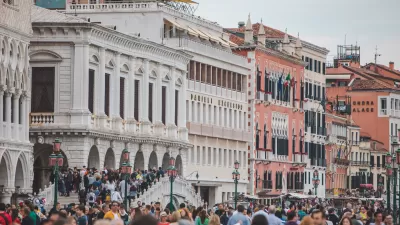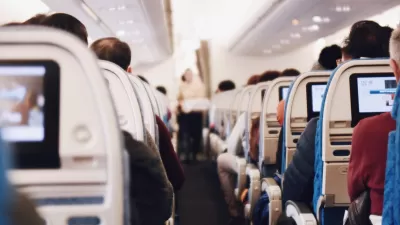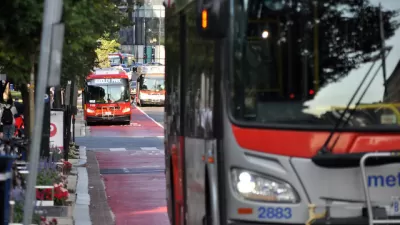Intercity bus travel is the fastest growing mode of travel for the third year in a row. This piece from New Geography looks at why.
New bus services have cropped up in recent years, offering cheap service between major city hubs, often operating as "curbside" services that sidestep bus terminals.
"The comeback of the intercity bus is noteworthy for the fact that it is taking place without government subsidies or as a result of efforts by planning agencies to promote energy efficient forms of transportation. Instead, it is a market-driven phenomenon that is gradually winning back demographic groups that would have scarcely contemplated setting foot on an intercity bus only a few years ago. Our DePaul University study estimates that curbside operators like Megabus expanded the number of daily departures by 23.9% last year. In the Northeast and Mid-Atlantic states, service grew at an even faster rate.
As recently as a decade ago, traditional bus services were all but written off as a "mode of last resort." A painful and unrelenting decline had pushed intercity buses into the margins of travel. The opening interstate highways, increased automobile ownership, and the deterioration of downtown business districts in major cities had weakened demand for intercity bus services starting in the 1960s. Continued retrenchment took place throughout the 1980s and 1990s-a downturn that pushed Greyhound into bankruptcy and continued even after the terrorist acts of September 11, 2001, which dramatically affected the demand for air travel."
FULL STORY: Here Comes the Bus: America’s Fastest Growing Form of Intercity Travel

Planetizen Federal Action Tracker
A weekly monitor of how Trump’s orders and actions are impacting planners and planning in America.

Maui's Vacation Rental Debate Turns Ugly
Verbal attacks, misinformation campaigns and fistfights plague a high-stakes debate to convert thousands of vacation rentals into long-term housing.

San Francisco Suspends Traffic Calming Amidst Record Deaths
Citing “a challenging fiscal landscape,” the city will cease the program on the heels of 42 traffic deaths, including 24 pedestrians.

Amtrak Rolls Out New Orleans to Alabama “Mardi Gras” Train
The new service will operate morning and evening departures between Mobile and New Orleans.

The Subversive Car-Free Guide to Trump's Great American Road Trip
Car-free ways to access Chicagoland’s best tourist attractions.

San Antonio and Austin are Fusing Into one Massive Megaregion
The region spanning the two central Texas cities is growing fast, posing challenges for local infrastructure and water supplies.
Urban Design for Planners 1: Software Tools
This six-course series explores essential urban design concepts using open source software and equips planners with the tools they need to participate fully in the urban design process.
Planning for Universal Design
Learn the tools for implementing Universal Design in planning regulations.
Heyer Gruel & Associates PA
JM Goldson LLC
Custer County Colorado
City of Camden Redevelopment Agency
City of Astoria
Transportation Research & Education Center (TREC) at Portland State University
Jefferson Parish Government
Camden Redevelopment Agency
City of Claremont





























